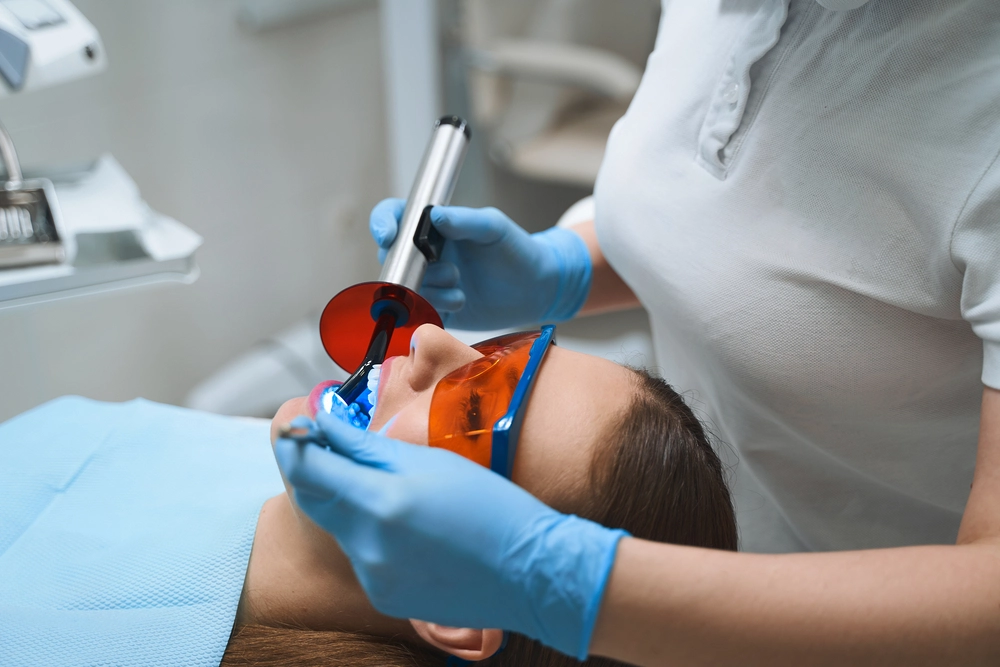Paradise Dental Studio is dedicated to providing expert root canal treatments to save and restore your natural teeth. If you have any questions or concerns about root canals or require this treatment, please don’t hesitate to contact us. Our experienced team is here to support your dental health journey.
Root Canals in Fort Lauderdale, FL
Trusted Root Canal Specialist for Your Dental Health
As your trusted dental provider in Fort Lauderdale, we want to help remove any fears or worries you have about root canals.

Have you ever woken up in the middle of the night with a toothache that feels like a lightning bolt shooting through your whole head? Or maybe you’ve been putting off that dental visit because you’re dreading going through the root canal process. We’ve been there – there is nothing pleasant about an infected or damaged tooth. But we’re here to tell you that root canals don’t have to be something you avoid or put off. While they may not be fun, getting an infected or damaged tooth taken care of is extremely important for your overall dental health and wellness.
What is a Root Canal?
Dentists perform a root canal treatment to save an infected or severely decayed tooth. During a root canal, when a tooth is diseased or damaged, the pulp is removed and the area is cleaned thoroughly . After proper cleaning, the canals are sealed with a filling material to help prevent further infection. Typically, a dental crown is put on top of the tooth that has been treated for added protection. Root canals offer a chance to save a tooth that would otherwise require extraction. With modern techniques, root canals are typically painless and can alleviate the discomfort caused by an infected tooth.

Procedure
Diagnosis: The first step is to do a comprehensive examination, which may include X-rays, in order to determine the level of damage or infection that has occurred in the tooth. Local anesthesia is administered to ensure the patient’s comfort during the procedure. Access Opening: A small opening is made on the top or back of the tooth to access the infected or damaged pulp (the innermost part of the tooth). Cleaning and Shaping: As part of the process of completely cleaning the interior of the tooth, specialized devices are utilized to remove the pulp tissue that has been injured or diseased. The root canals are shaped and disinfected to remove all traces of infection. Filling: After cleaning and shaping, the tooth’s interior is filled with a biocompatible gutta-percha material to seal the space. The access opening is sealed with a temporary or permanent filling. Restoration: In many cases, a tooth that has undergone to complete a root canal, a dental crown can be necessary to provide strength and protect against further damage. The dentist will discuss the need for a crown and take impressions for its fabrication.

Surgical vs. Non-Surgical Root Canal
Non-Surgical Root Canal
Non-surgical root canals are the most common type of root canal treatment. They are typically performed in a dental office using local anesthesia to ensure the patient’s comfort. The procedure involves cleaning, shaping, and filling the tooth’s interior to remove infection and save the tooth.
Surgical Root Canal
In some cases, a surgical root canal, also known as an apicoectomy, may be necessary. In order to carry out this treatment, an oral surgeon is required and is recommended when a non-surgical root canal has not resolved the issue or when the tooth’s root tip is infected. During a surgical root canal, the surgeon accesses the end of the tooth’s root, removes the infected tissue, and seals the area.

Reasons for a Root Canal
Several factors can lead to the need for a root canal:
- Decay: Severe tooth decay that reaches the pulp can cause infection and necessitate a root canal.
- Illness: When bacteria invade the pulp, it can lead to disease, resulting in pain and swelling.
- Trauma: Disruptions to the teeth, such as a fractured or fractured tooth, can damage the pulp and require root canal treatment.
- Deep Fillings: Extensive dental fillings close to the pulp can irritate and damage the pulp over time.
- Abscess: An abscess, a pocket of pus near the tooth’s root, can indicate the need for a root canal to remove the infection.
- Sensitivity: Prolonged sensitivity to hot or cold temperatures may indicate pulp damage, especially after consuming food or drinks.

What to Expect After a Root Canal
After a root canal, it’s normal that the individual may have some discomfort or minor pain, which can often be controlled with pain drugs that are available without a prescription. Here’s what to expect during the recovery period:
- Sensitivity: It’s common to have some sensitivity to hot or cold temperatures for a few days after the procedure.
- Discomfort: Mild discomfort or pain around the treated tooth may persist for a few days but should gradually subside.
- Swelling: Swelling around the treated tooth or in the surrounding gum tissue may occur but should resolve within a few days.
- Diet: Stick to soft foods initially and gradually reintroduce regular foods as tolerated.
- Oral Hygiene: Continue your routine, but be gentle around the treated tooth.
- Follow-Up: Attend any scheduled follow-up appointments with your dentist or endodontist to monitor the healing process.





